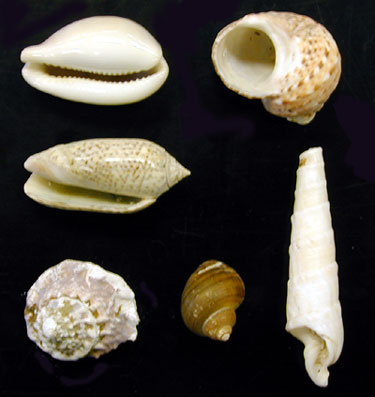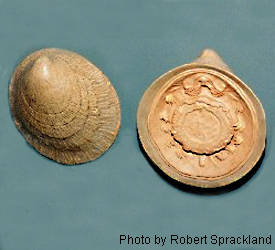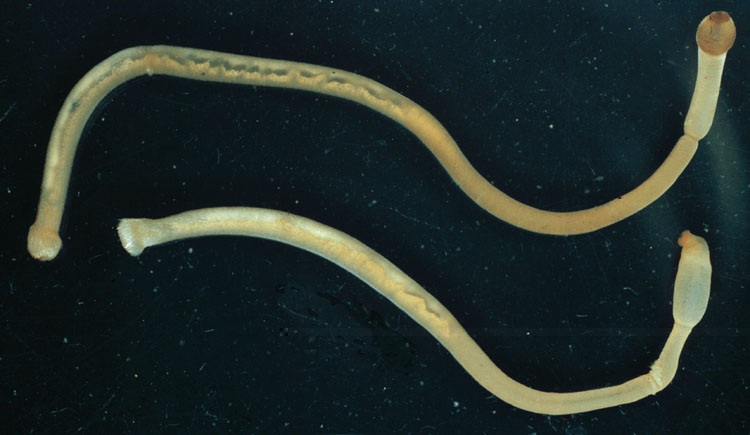



The Study of Mollusks
What is Malacology?
Malacology is the branch of invertebrate zoology which deals with the study of the Mollusca (mollusks or molluscs), the second-largest phylum of animals in terms of described species after the arthropods. One division of malacology, conchology, is devoted to the study of mollusk shells.
Mollusks
There are around 85,000 recognized extant species of molluscs. This is the largest marine phylum, comprising about 23% of all the named marine organisms. Numerous molluscs also live in freshwater and terrestrial habitats. Molluscs are highly diverse, not only in size and in anatomical structure, but also in behaviour and in habitat.
Biology
The two most universal features of the body structure of molluscs are a mantle with a significant cavity used for breathing and excretion, and the organization of the nervous system. Because of the great range of anatomical diversity, many textbooks base their descriptions on a hypothetical "generalized mollusc", with features common to many but not all classes within the Mollusca.
Classes
The phylum Mollusca is typically divided into nine or ten taxonomic classes, of which two are extinct. The gastropods (snails and slugs) include by far the most classified species, accounting for 80% of the total. Cephalopod molluscs such as squid, cuttlefish and octopus are among the most neurologically advanced invertebrates. Either the giant squid or the colossal squid is the largest known species of animal without a backbone.
| Class | Major organisms | Described living species | Distribution |
| Caudofoveata | Worm-like organisms | 120 | Seabed 200-3,000 metres (660-9,800 ft) |
| Aplacophora | Solenogasters, worm-like organisms | 200 | Seabed 200-3,000 metres (660-9,800 ft) |
| Polyplacophora | Chitons | 1,000 | Rocky tidal zone and seabed |
| Monoplacophora | An ancient lineage of molluscs with cap-like shells | 31 | Seabed 1,800-7,000 metres (5,900-23,000 ft); one species 200 metres (660 ft) |
| Gastropoda | All the snails and slugs including abalone, limpets, conch, nudibranchs, sea hares, sea butterfly | 70,000 | Marine, freshwater, land |
| Cephalopoda | Squid, octopus, cuttlefish, nautilus | 900 | Marine |
| Bivalvia | Clams, oysters, scallops, geoducks, mussels | 20,000 | Marine, freshwater |
| Scaphopoda | Tusk shells | 500 | Marine 6-7,000 metres (20-23,000 ft) |
| Rostroconchia | Fossils; probable ancestors of bivalves | Extinct | Marine |
| Helcionelloida | Fossils; snail-like organisms such as Latouchella | Extinct | Marine |
Systematics
There is good evidence for the appearance of gastropods, cephalopods and bivalves in the Cambrian period 542 to 488.3 million years ago. However, the evolutionary history both of the emergence of molluscs from the ancestral group Lophotrochozoa, and of their diversification into the well-known living and fossil forms, is still vigorously debated. The most abundant metallic element in molluscs is calcium.
Mollusks and Man
There is a risk of food poisoning from toxins that accumulate in molluscs under certain conditions, and many countries have regulations that aim to minimize this risk. Blue-ringed octopus bites are often fatal, and the bite of Octopus rubescens can cause necrosis that lasts longer than one month if untreated, and headaches and weakness persisting for up to a week even if treated.[3] Stings from a few species of large tropical cone shells can also kill. However, the sophisticated venoms of these cone snails have become important tools in neurological research and show promise as sources of new medications.
Molluscs have for many centuries been the source of important luxury goods, notably pearls, mother of pearl, Tyrian purple dye, and sea silk. Their shells have also been used as money in some pre-industrial societies.
Schistosomiasis (also known as bilharzia, bilharziosis or snail fever) is transmitted to humans via water snail hosts, and affects about 200 million people. A few species of snails and slugs are serious agricultural pests, and in addition, accidental or deliberate introduction of various snail species into new territory has resulted in serious damage to some natural ecosystems.

Gastropoda

Bivalvia

Scaphopoda

Monoplacophora

Cephalopoda

Poliplacophora

Aplacophora

